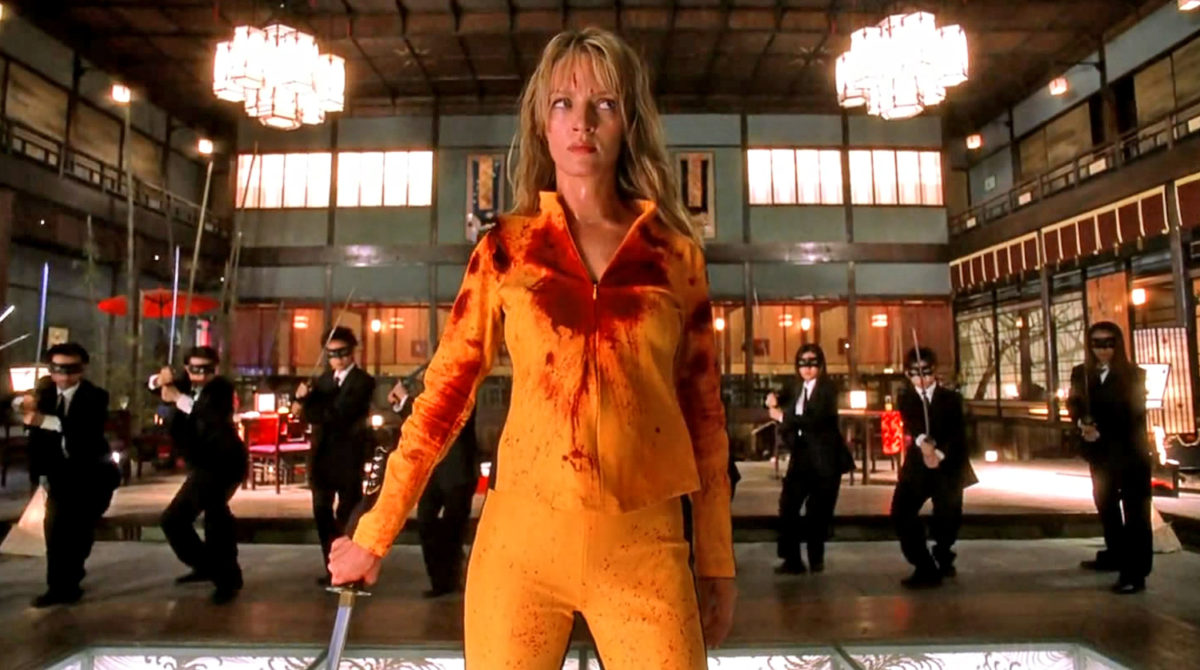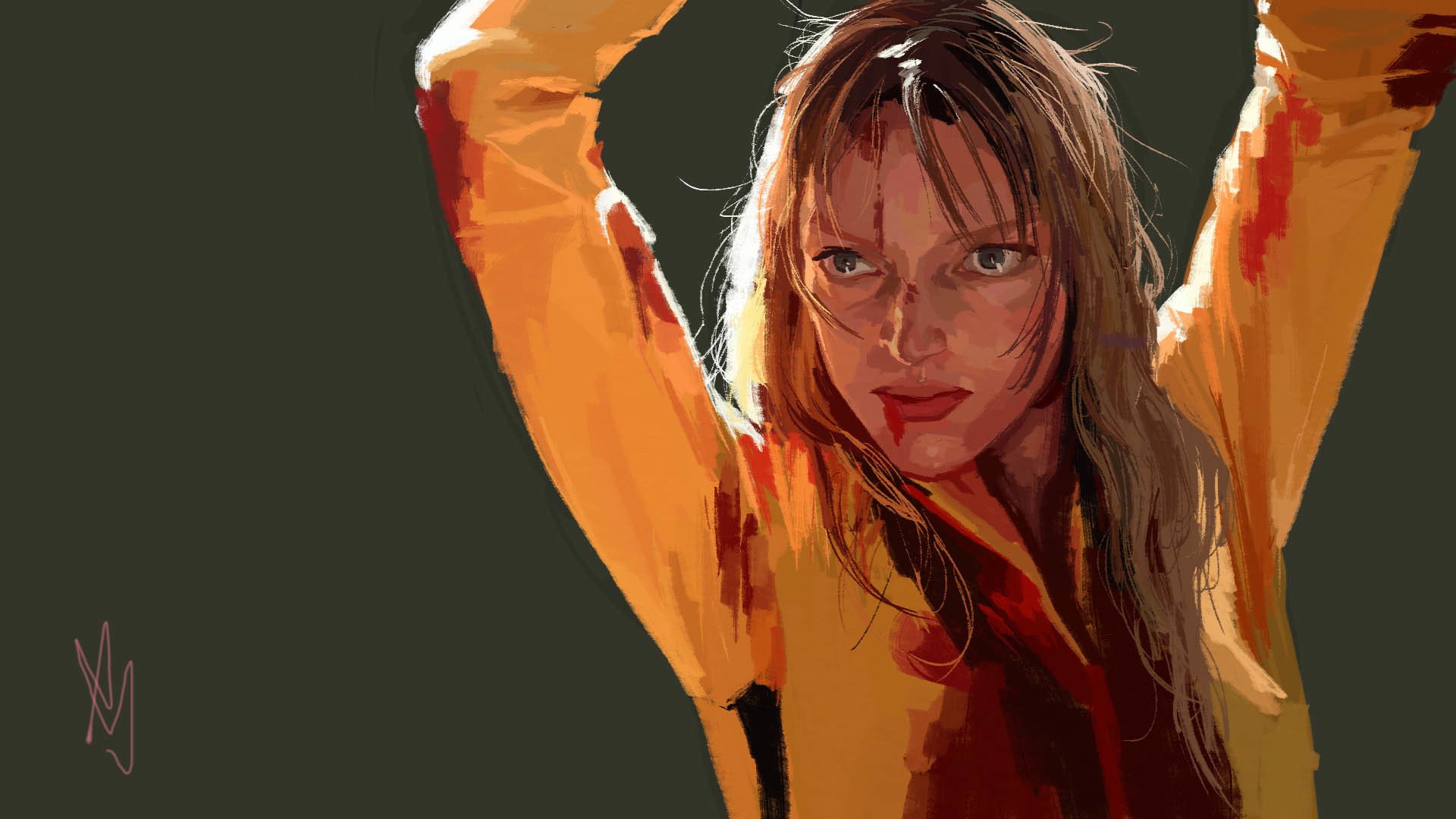Quentin Tarantino is an American film maker, writer and producer known for his violent cult classic films. His work is reflective of the postmodernist style. Such a style sets a known reliance on familiar images and appearances. It fills the viewer with a display of sentimental and nostalgic cultural code of identities, and a depthless simulation of ‘real’ without any substantial reference to actual historical detail or reality.
Tarantino juxtaposes the pieces in his movies in highly unlikely pairings, a collage of co-opted cultural references, art pieces or even ideas to form an entirely new product.
In Tarantino’s Kill Bill movies, Volume 1 is like a pastiche of the Kung Fu films of the East while Volume 2 involves a sampling of the classic Western movies. Tarantino’s cultural references in the Kill Bill movies demonstrate how the Eastern and Western culture has influenced each other over the years and the new style of action filmmaking is an inseparable blend of the two.
With Uma Thurman in the lead, the violence and fight scenes in both the movies are presented as a collage of different genres with some scenes filmed in black and white, some involving a great deal of dialogue, some barely incorporating speaking and a Japanese anime cartoon scene. Unlike other action movies, Tarantino’s gore and violence have a unique savour to them and seem tolerable with his transitional style of juxtaposing diverse cultural references.
the Kill Bill movies exemplify the male lens by co-opting a gendered enactment of revenge in which the female lead becomes a spectacle, catering to the gaze of the spectator who is made to identify with the male look. Thus, the determining male gaze projects its fantasy on the female figure, with her appearance coded for strong visual and erotic impact
The groundbreaking contention around Tarantino’s Kill Bill is the co-option of violence in a seemingly feminist tone throughout the movies, touting a female lead with supposed agency, on a rampage venture to get back at her abusers after being comatose for a period of four years. She is seen striding her way through, with her exemplary professional fighting skills in pursuit of blood revenge.

A parallel and conventional narrative around the gendered concept of violence exhibited in the Kill Bill movies maintains that the images of women enacting violence in films, particularly onto men, serves to challenge the existing power relations between men and women as dictated by patriarchy by offering a sample of women in the seat of power.
Many would argue that a rape revenge drama like Kill Bill empowers the female viewers by engaging them in an energetic spectacle of violence and redemption, which admittedly from a first hand experience seems partially true. Female spectators do experience resistance through identification with women characters like Beatrix Kiddo aka The Bride, Uma Thurman’s role in the film.

However, it becomes crucial to employ a critically nuanced position to understand the perpetuation of female oppression in the cinematic concept of the male gaze. In her article Visual Pleasure and Narrative Cinema, feminist film theorist Laura Mulvey provides us with a diabolic concept of the male gaze reflected in cinemas. She argues that films stimulate visual pleasure by integrating structures of voyeurism and narcissism into the story and the image. These gendered structures are ones in which the former offers a visual pleasure by looking at others and the latter is used to derive a self-identification with the figure in the image.
While the exchange of traditional gender roles, particularly as they relate to the execution of extreme violence might strike a chord with feminist sensibilities, the film’s story arc places an undue focus on female beauty presented to us from a typical male gaze
In a similar fashion, the Kill Bill movies exemplify the male lens by co-opting a gendered enactment of revenge in which the female lead becomes a spectacle, catering to the gaze of the spectator who is made to identify with the male look. Thus, the determining male gaze projects
